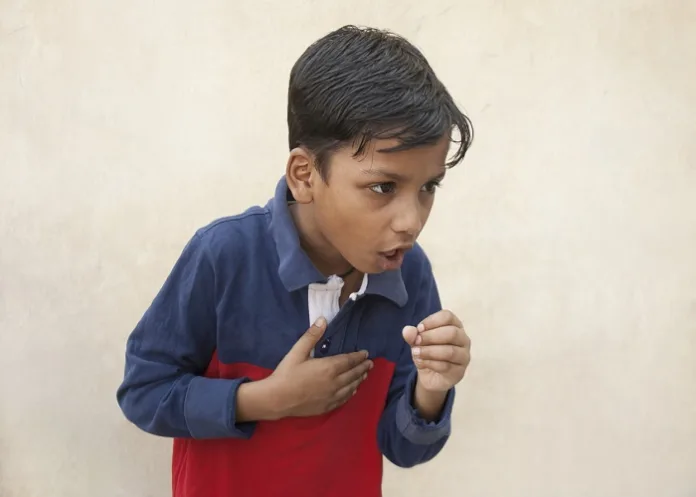A child health investigation tracking risk factors for respiratory disease and other infections in children in the Western Cape has revealed new facts about paediatric TB, showing these children were not only likelier to wheeze and have poor lung function, but also, were more prone to stunted growth.
Health experts have long known that childhood TB can compromise and reduce the functionality of lungs later in life, but the latest findings from the Drakenstein Child Health Study, a multi-year research project following about 1 000 mothers and their children from birth to adolescence, reveal that not only does the disease shrink growing lungs, but is also linked to reduced height and and weight, even after accounting for pre-existing respiratory and growth conditions in children under five.
The University of Cape Town (UCT) and Boston University-led study is the first to show post-TB paediatric growth impairment and an association between TB and wheezing after the infection, reports TimesLIVE.
Professor Heather Zar, chair of the department of paediatrics and child health at UCT and one of the authors, said the findings highlight the importance of strengthening preventive interventions against TB in children “to prevent long term impairment in health and the need to diagnose and treat disease early”.
She said the study leverages a unique opportunity to observe the enrolled children.
“Given the large burden of childhood TB in low-and-middle-income countries, these results are crucial in delineating the burden and morbidity associated with TB illness, and in strengthening preventive interventions,” she said.
The WHO estimated in 2018 that 27 000 children developed TB in South Africa. Childhood TB remains under-reported though, with a case detection rate of 65%, leaving a third of affected children in the country undiagnosed or unreported.
For the study Zar and international researchers from Boston University and the University of Western Australia followed a cohort of 1 068 children from birth to the age of nine.
Lead author Leonardo Martinez, an assistant professor of epidemiology at Boston University, said the findings “suggest that prevention of TB in the first few years of life may have substantial long-term health benefits, in particular to lung health, through childhood”.
The study, which appears in American Journal of Respiratory and Critical Care Medicine, comes as the WHO calls for “increased investments and accelerated global action to end TB”.
“Although there is an effective treatment for TB in children, there is concern that the impact may be long-lasting and there could be long-term morbidity even after treatment and recovery,” said Martinez.
He said several developments were crucial to ensure children received adequate preventive care, including new vaccines, increased screening and access to treatments.
“Most children in high-burden settings are not identified by health services before they progress to tuberculosis disease. They are found typically because they have presented with TB symptoms and need to be treated.”
However, researchers noted a “huge momentum in the field to work together to find new scientific discoveries relevant to those at risk of TB or who have the disease”.
Study details
The Long-Term Impact of Early-Life Tuberculosis Disease on Child Health: A Prospective Birth Cohort Study
Leonardo Martinez, Diane Gray, Maresa Botha, Michael Nel, Shaakira Chaya, Carvern Jacobs, Lesley Workman, Mark Nicol, and Heather Zar.
Published in the American Journal of Respiratory and Critical Care Medicine on 6 February 2023.
Abstract
Rationale
There is growing concern that post–tuberculosis disease (TB) sequelae and morbidity are substantial, but no studies have controlled for pre-existing factors before disease. Whether children have post-TB morbidity is not well characterised.
Objectives
To assess the effect of a TB diagnosis on wheezing episodes, lung function, and anthropometric measurements among children enrolled in a prospective birth cohort study in South Africa.
Methods
We prospectively followed children from birth through 5 years for TB using diagnostic tests including chest radiography and repeated induced sputum sample testing with Xpert MTB/RIF and liquid culture. We longitudinally measured health outcomes including growth, wheezing, and lung function up to 5 years. Mixed-effects linear regression models were used to assess growth and lung function after TB. Poisson regression was used to assess risk of subsequent wheezing.
Measurements and main results
Among 1 068 participants, 96 TB cases occurred (1,228 cases per 100,000 person-years [95% confidence interval (CI), 1,006–1,500]) occurred over 7,815 child-years of follow-up. TB was associated with lower length-for-age (−0.40 [95% CI, −0.68 to −0.11]), weight-for-age (−0.30 [95% CI, −0.59 to −0.01]), and body mass index (−0.54 [95% CI, −0.83 to −0.25]) z-scores at 5 years. Children developing TB were consistently more likely to wheeze regardless of the timing of TB. Children with diagnoses of TB between 0 and 1 year of age had reduced time to peak tidal expiratory flow over total expiratory time (−2.35% [95% CI, −4.86% to −0.17%]) and higher fractional exhaled nitric oxide (2.88 ppb [95% CI, 0.57–5.19 ppb]) at 5 years. Children with diagnoses of TB between 1 and 4 years of age had impaired Vt (−9.32 ml [95% CI, −14.89 to −3.75 ml]) and time to peak tidal expiratory flow over total expiratory time (−2.73% [95% CI, −5.45% to −0.01%]) at 5 years.
Conclusions
Prevention of TB disease in the first few years of life may have substantial long-term benefits through childhood.
UCT Drakenstein Child Health Study (Open access)
See more from MedicalBrief archives:
MSF: Vital paediatric TB medicines need to be available as generics
Experts punt stool testing for TB in children instead of sputum tests
SA to expedite TB diagnosis/treatment as cases continue to soar
Guide hopes to lead to uptake of improved TB treatment

